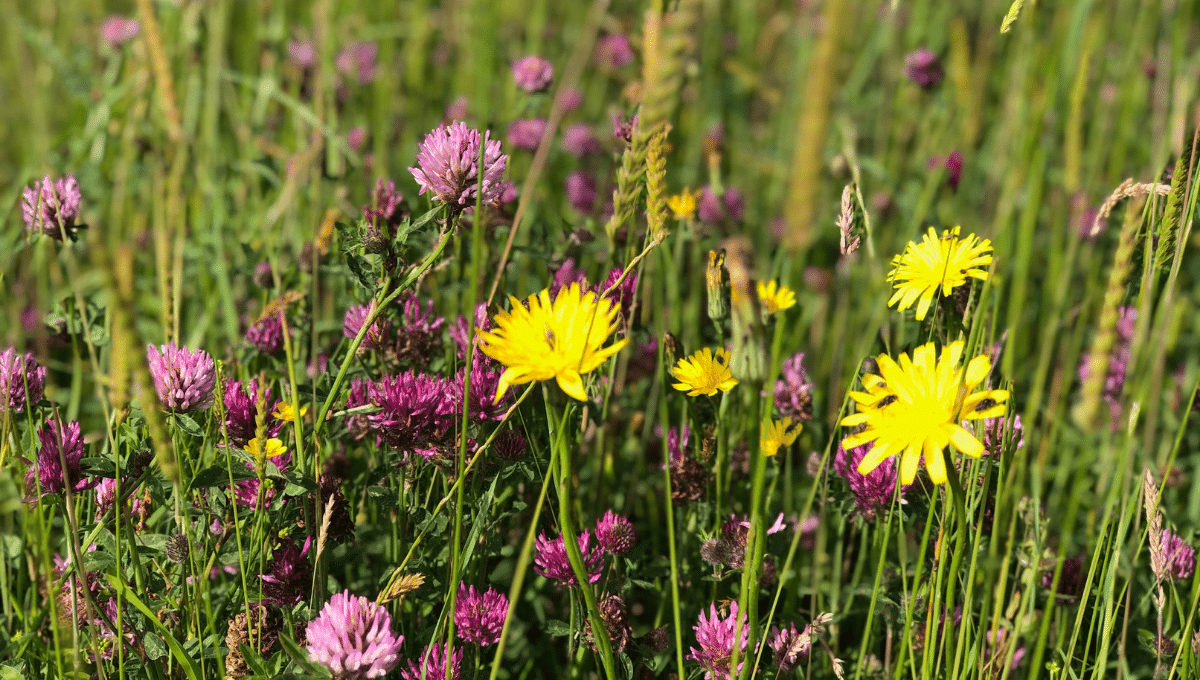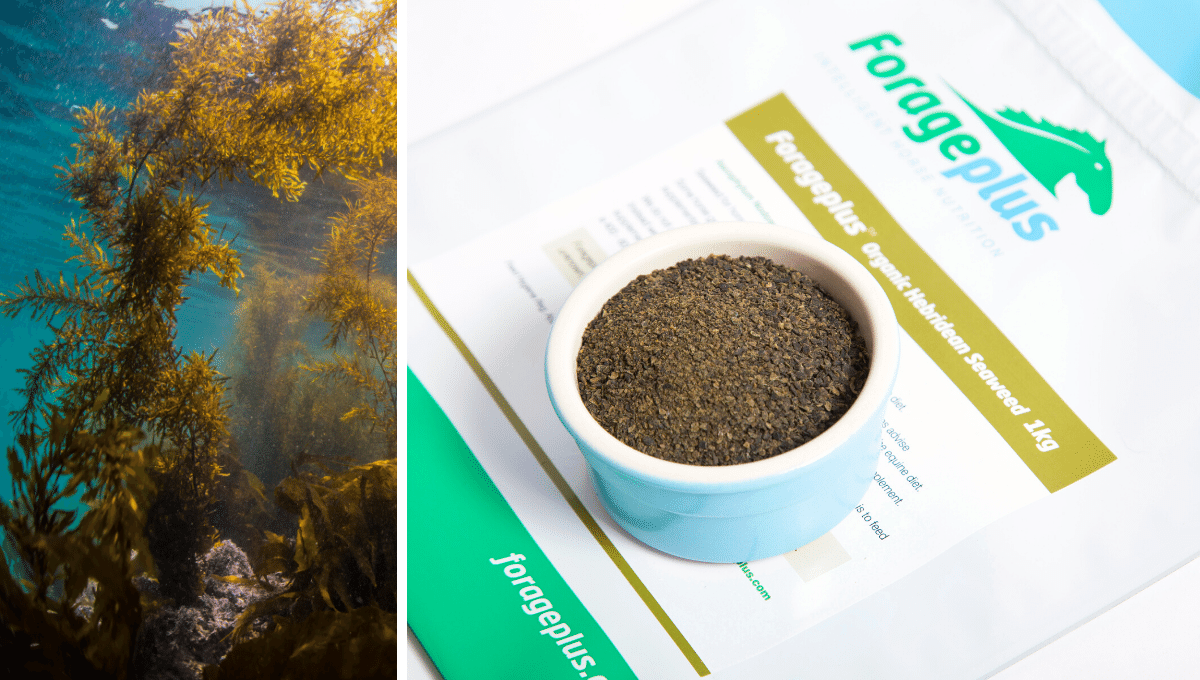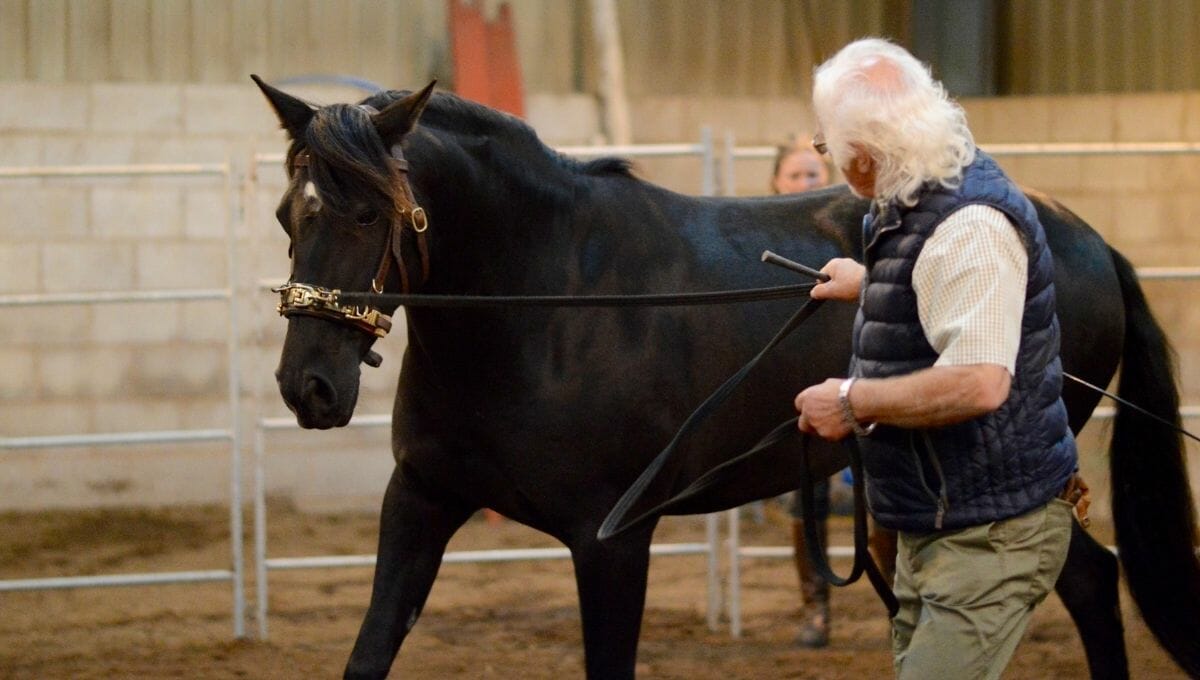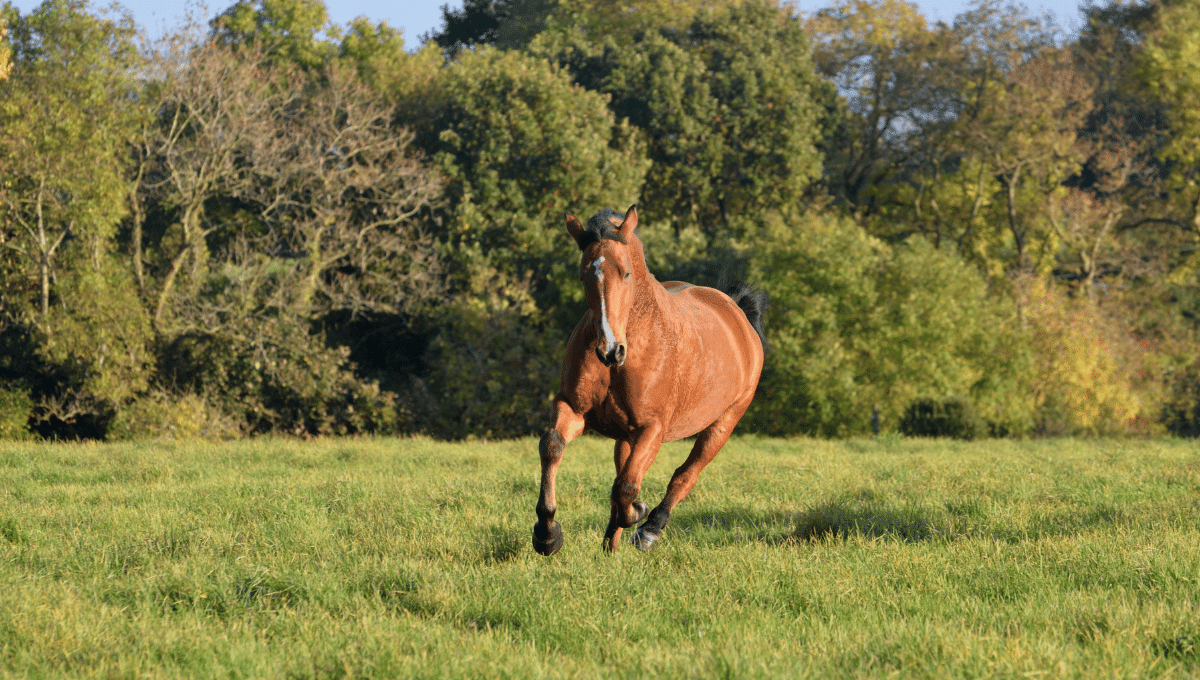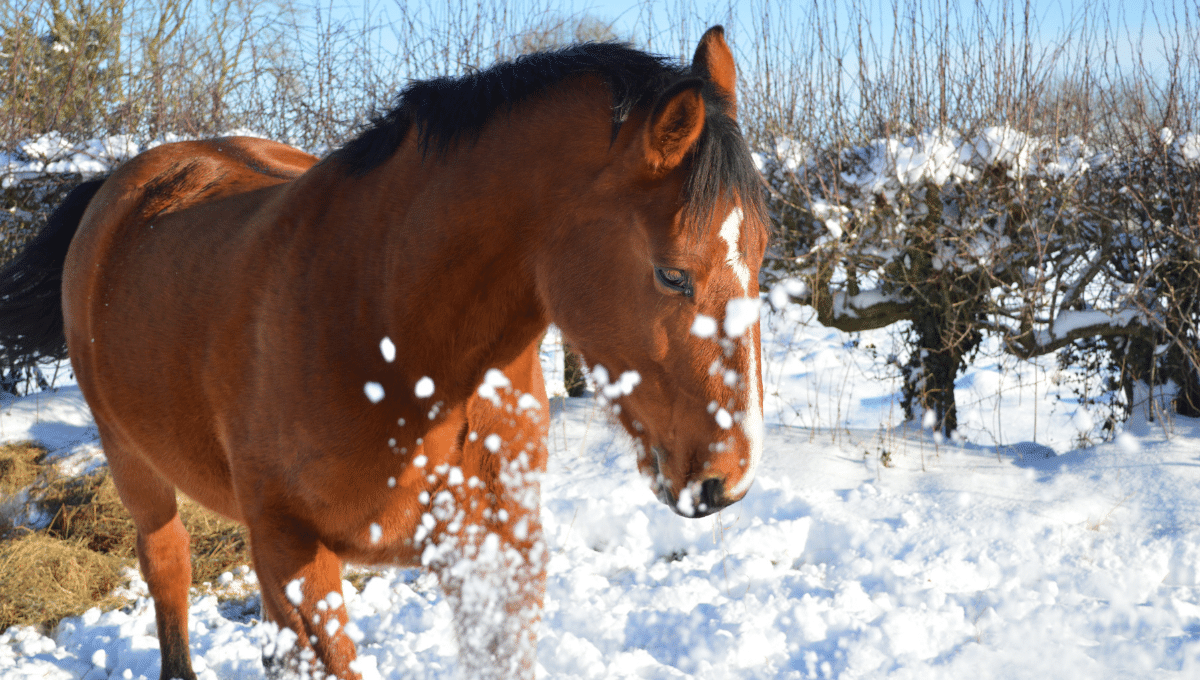Often people ask Forageplus why they have a proliferation of clover in their horse pasture. Here we discuss whether clover is a good thing in the pasture, whether too much is problematic for horses and how you can address a situation where you have too much clover in your horse’s field.
Types of clover
The three most common clovers that appear in horse pastures are white, red, and alsike. Although sweet clover is also a problematic clover for horses, causing a bleeding disorder, it is rarely found in pasture situations. It is more commonly found in hay mixtures harvested from roadsides where the deep-rooted sweet clover is seeded as a soil stabilizer.
White Clover
White clover is commonly found in many horse pastures because it will survive close grazing. It is a low-growing plant and has no upright stems. White clover produces stolons and stems that run along the surface of the ground. Each of the three leaflets on the plant will have an inverted white “V” marking on them. This marking is commonly referred to as a watermark. The flowers are white in colour.
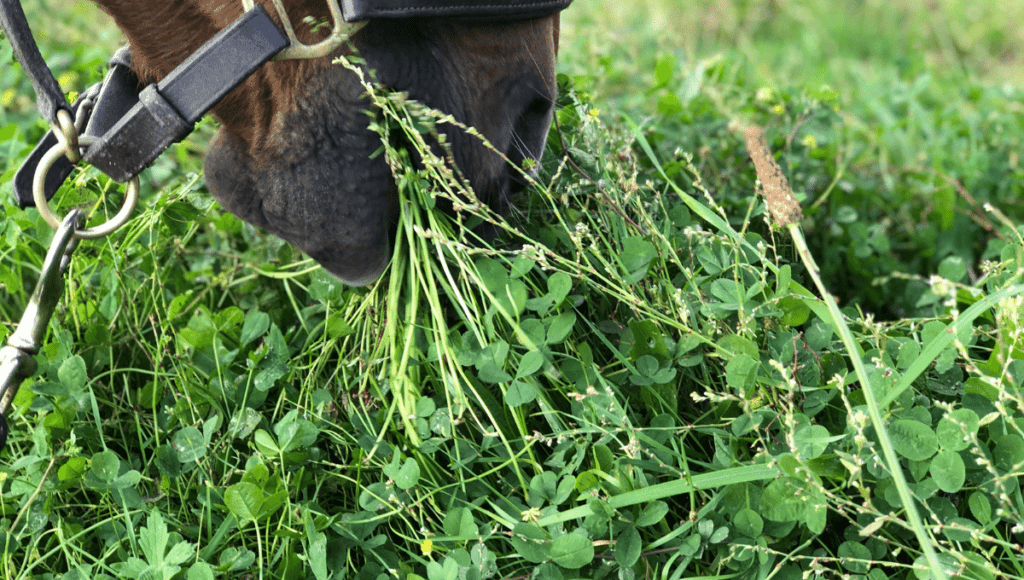
Red Clover
Red clover has an erect growth habit, with larger reddish-purple flowers at the end of each hairy stem. Although a common pasture legume, it does not tolerate continuous grazing, and as a result, it is not normally found in overgrazed pastures. The leaves of the red clover plant, like white clover, also have a watermark.
Alsike Clover
Alsike clover, like red clover, is a tall upright plant. However, unlike red clover, its flowers are smaller and pink and its leaves have no watermark or white inverted “V” on the leaves.
Clover in fields
Clover is an essential component in fields. It provides significant useful energy, protein and fibre in the diet of horses. They are the most common leguminous plants in horse fields and convert atmospheric nitrogen to plant-available nitrogen. Clover is also a pasture “filler” that can grow over bare spots and prevent the emergence of less beneficial weeds.
When clover is part of a diverse number of plants in fields then it is a useful nutrient source for horses and ponies but where clover takes over as a dominant plant then its fast growth in the late spring can result in a rapid increase in the protein content of the horse diet.
Clover growth is at its greatest in July and August. As the season progresses your horse will naturally eat less clover as it becomes bitter to taste and therefore less palatable however where clover is the dominant plant then some horses will have no option but to choose to eat this plant even though it might not be very palatable.
When does Clover take over?
If the grass is constantly grazed short then you start to see the grass being outcompeted and other plants take over. This is just a case of taking advantage of a situation that is not benefiting the growth of grass. Grass needs to have a recovery time between being grazed, and not, so as to thrive. Grass finds being cropped short constantly challenging, with the sward becoming weaker and the roots more shallow. In this situation, clover has more opportunity to compete for space and may become more dominant in your sward than intended.
Clover grows well in soil that has poor fertility and needs greater amounts of minerals to improve microbial activity in the soil. Application of nutrients that balance the soil will inhibit clover productivity. The right balance of calcium, phosphorous, magnesium, chloride, sodium, nitrogen and sulphur will raise soil microbial activity, improving the fertility of the soil so that grasses and other plants outcompete the clover.
Excessive clover growth in horse pastures has four main causes, each with a recommended management approach.
| Problem | Solution |
|---|---|
| In poorly drained and compacted soil, clovers can out compete our traditional pasture grasses. | Keep horses out of saturated pastures and avoid poaching of the soil. Aerate fields when heavy traffic or compacted areas begin to develop. |
| Clover does well in a low nitrogen environment because it can fix nitrogen from the air. If it is not suppressed by lush pasture grasses able to grow on a soil with adequate nutrients, then clover will spread and become the dominant plant within the field. | Carry out appropriate horse pasture friendly soil testing to create a healthy well functioning soil environment to support the growth of health grass. Read about soil testing for horse pasture here |
| Over grazing where the grass become very short, like a bowling green, causes reduced grass population, weakens grass roots and creates sparse low density leaf growth. Over grazing encourages aggressive clover growth and weed invasion. | An effective rotational grazing approach prevents overgrazing. Horses should be moved to another grazing area when the grass is grazed down to about 6 cm in height. |
| The selection of grass species in the pasture may not be appropriate for the soil type or the degree of grazing intensity to which the field will be exposed. The resulting sparse sod supports an overwhelming growth of clover in some pastures. | In the vast majority of cases no reseeding is necessary. Purely caring for the pasture through correct soil applications and grazing in a way that encourages the proliferation of grasses (and the dormant seeds just waiting for the right environment) will be enough to create diverse and healthy grazing for horses. |
When is clover a problem for horses?
Clover in moderate amounts brings benefit to the health of any pasture as clover is a nitrogen-fixing plant. When eaten in appropriate amounts, clover can be a valuable nutrient for the horse. However, consumption of clover becomes problematic, with certain types of clover, whenever the percentage of clover increases in the pasture or forage/hay mix above 10/20 per cent. Concern for the horse is further amplified if the clover itself is not healthy and contaminated with a fungus or other toxins.
Clover growing in abundance on poor, compacted, overgrazed and sick pasture is likely to be unhealthy itself. It may have high levels of nitrates which are referred to as Non-Protein Nitrogen (NPN). Equines have developed to cope with a normal level of what are potentially toxic NPN compounds in their forage. NPN levels in all plants will be higher where sulphur is at poor levels in the soil. The level of these compounds is even higher in the lush spring growth of NPK or conventionally fertilised pasture where sulphur levels are insufficient to balance nitrogen levels.
Clover under stress such as frost or drought will also accumulate NPN naturally. At excess levels, NPN can overload the digestive and metabolic system of the horse causing liver imbalance and toxins in the blood. Toxins in the blood may trigger laminitis.
How is clover a problem for horses?
Horses vary in their preferences for clover and their individual sensitivities. It is not uncommon for some horses in a field to be affected whilst others show no problems. For some, however, eating too much clover or being exposed to unhealthy clover, can create a number of problems. Such problems include extreme obesity, increased salivation (slobbers), and even conditions of lactation in non-pregnant horses. Other symptoms occasionally include tearing, skin lesions, difficulty breathing, increased urination and feed refusal.
Alsike clover can cause “clover poisoning” which results in photosensitisation and liver disease. Photosensitisation is usually the initial sign of poisoning and is secondary to the effects of liver damage. The liver is damaged by substances called alkaloids contained in the clover. The damage results in the toxic metabolites of plant ingestion being deposited in the skin. The metabolites are photo-reactive and create harmful oxidative products in the presence of sunlight. This creates tissue damage and inflammation.
It is the non-pigmented (pink-skinned areas) of the horse which is most affected by this photosensitisation. Other horses with dark skin will still have liver damage but they will not suffer from photosensitisation. Photosensitisation is like “sunburn”. You will see a reddening of the skin, followed by weeping, raw and painful open wounds, covered with a crusty discharge. The severity of the symptoms depends upon how much time and amount of toxic clovers have been present in the horse’s diet. Liver cirrhosis and/or scarring generally follow several months of plant consumption.
Horses with symptoms suggestive of alsike clover toxicity need to be immediately offered new feed and removed from a diet containing clover. Mild cases will usually recover once the toxic clover is removed from the diet. Horses displaying signs of photosensitisation will find relief by reducing their exposure to sunlight. Allowing them to graze at night while providing them with shelter during periods of sunlight will help the skin lesions to heal. Horses showing signs of very advanced liver disease have little chance of survival.
Clovers can be susceptible to fungal infections under certain environmental conditions and when growing on compacted soil with poor fertility. Warm days and cooler nights typical of late summer and early autumn create heavy dews, which seem to create ideal conditions for fungal growth. There appears to be a causal relationship between the “stressed” clovers and the spike of “mud fever” or caudal heel dermatitis which typically occurs during late summer and early autumn. Either ingestion of a mycotoxin produced by the fungal growth or perhaps even skin contact with the irritating mycotoxin may be a contributing factor to this skin reaction.
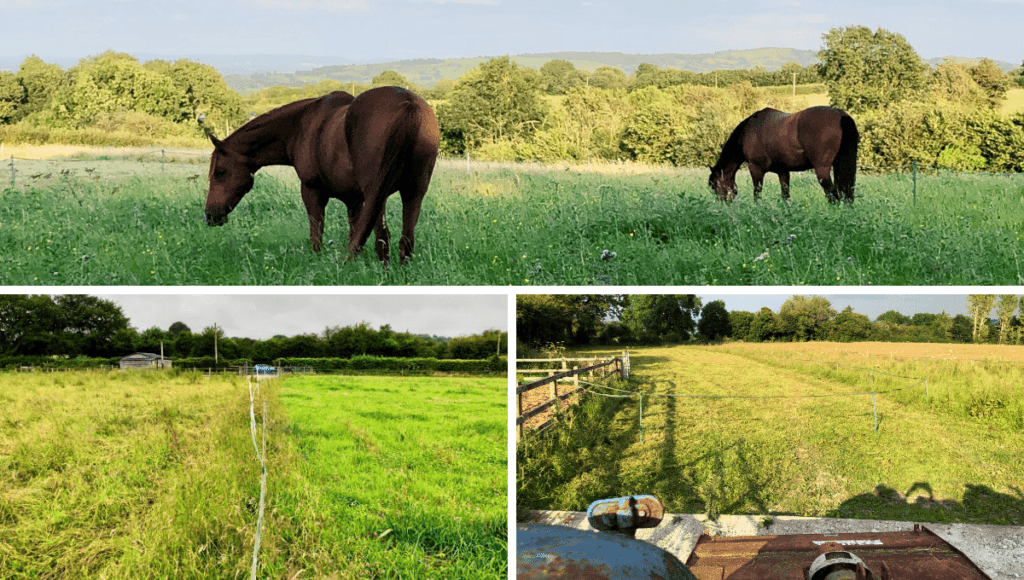
How to reduce clover in horse fields
A grazing approach that rotates horses around their grazing area as if they are migrating animals will allow the pasture to have periods of rest and to be managed to prevent overgrazing. The grazing area can be split into cells using electric tape. The horses graze a cell until the grass is no less than 4-6 cm in length before being moved on to the next cell. The grazed cell is then harrowed and topped. This returns nutrients and organic matter to the soil to create a virtuous circle of recycling for the health of the soil and the soil microbiome.
This approach also minimises the compaction of the soil. Resting the cell for at least 3 months means that the parasite cycle is broken so droppings are not picked up but are used to return nutrients to the soil. A rotational grazing approach leaves enough leaf surface for the grasses to manufacture food, by the process of photosynthesis, to support growth, recovery, and healthy roots and literally out-compete the clover.
If you don’t have the choice to use the rotational, cell method of grazing and the grazing is always short-cropped then be aware that some grass seed mixes are more suitable for short grazing than others. It is important to understand however that short-cropped grazing for horses creates a number of problems. Short-cropped grass will always be high in sugar, low in fibre and dirty because the horse has to eat close to the soil. It is far more preferable to allow horses to eat longer, lower sugar, higher fibre grass. Grass more than 8 cm in length to standing hay is more preferable.
If a pasture has a high amount of clover then the best strategy is to manage the pasture differently to reduce it. If management can not be changed then the last resort of a broadleaf herbicide labelled for pasture use can eliminate clover. Generally, herbicide application is recommended while clover is actively growing and before it gets too large. Treatment can also be done in the autumn while it is still green. Care should be taken to keep horses off pasture for at least a month after spraying and preferably until the dead plants have fully decomposed.
Any reseeding of paddocks should be planned with great care. Ploughing is to be avoided in all situations so that the soil environment remains undisturbed. Overseeding is useful in the spring together with applicants of nutrients to promote soil health. In conjunction with overseeding, resting pasture, topping it and never allowing it to become overgrazed, compacted and stressed will soon see the clover just disappearing as if by magic.
Clover likes poor soil fertility so nutrients and lime should be applied according to soil test results to maintain balanced nutrient and pH levels. The right soil test is important so that all the nutrients needed are applied at the right levels for the pasture. Forageplus have found that a test calculating amounts needed to be based on the work of Albrecht/Kinsey is superior for creating healthy soil which produces low sugar, nutrient-high, mineral-balanced pasture for grazing horses. Clover will reduce to beneficial levels if the soil is balanced for healthy grass growth.
Application of a nitrogen source such as well-rotted farmyard manure or another nitrogen source, which is matched to what a soil analysis indicates is needed, will also inhibit clover productivity. This is a cheaper way of adding nutrients back into the soil but the cheapest way is a rotational, cell, grazing approach where you use the horses’ own manure to add organic matter and nutrients back into the soil.
Clover issues and the resulting problems with horse health stem from grazing management strategies that create poor health in the soil. Addressing the root causes is essential for the long-term management of a healthy environment for grazing horses. If you have any questions about this article or you need help to manage the land your horses graze then please contact us for information and support.
Read more of our articles on field and stable management by clicking here.
If you would like to explore testing the soil fertility in your own horse pasture, take a look at our UKAS-accredited soil analysis here.

